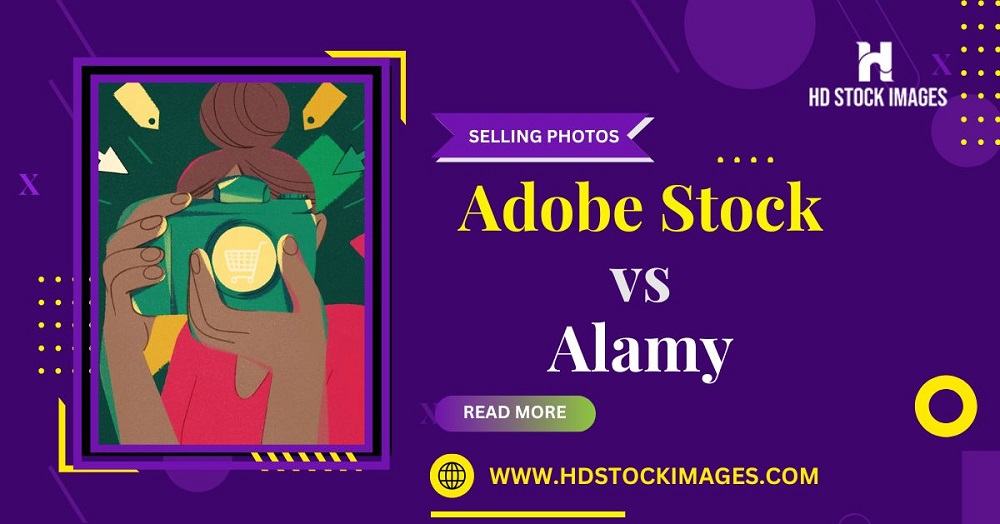Introduction
In today's digital age, the demand for high-quality and captivating visual content is ever-growing. Whether you're a professional photographer looking to monetize your artistry or an enthusiast seeking to turn your passion into profit, choosing the right platform to sell your photos is a crucial decision. With a plethora of options available, two prominent names stand out: Adobe Stock and Alamy. In this blog post, we'll dive into a comprehensive comparison of these platforms, weighing their features, advantages, and disadvantages. By the end, you'll have a clearer understanding of which platform aligns best with your goals and style, ensuring that your photographic journey leads to both creative fulfillment and financial success. Join us as we dissect the intricacies of Adobe Stock and Alamy, empowering you to make an informed choice for your photography venture.Also Read This: Is Alamy Exclusive? What Contributors Should Know About Rights
2. Adobe Stock

Overview of Adobe Stock
When it comes to the world of creative software and imagery, Adobe is a household name. Adobe Stock, the company's stock photo platform, seamlessly integrates with the Adobe Creative Cloud ecosystem, making it a compelling choice for both creators and buyers. With its extensive user base and far-reaching visibility, Adobe Stock offers a unique opportunity to showcase your work to a global audience.Integration with Adobe Creative CloudAdobe Stock's integration with Adobe Creative Cloud applications like Photoshop, Illustrator, and InDesign streamlines the workflow for creatives. This integration allows users to access, license, and manage stock photos directly within their creative projects.Wide User Base and Potential VisibilityLeveraging Adobe's widespread popularity, Adobe Stock provides contributors with exposure to a massive network of potential buyers. This can significantly enhance the visibility of your work and increase your chances of generating sales.Pros and Cons
Here's a breakdown of the pros and cons of using Adobe Stock for selling your photos:| Pros | Cons |
| High Visibility due to Adobe's Popularity | Stringent Review Process |
| Seamless Integration for Adobe Creative Cloud Users | Lower Contributor Royalties Compared to Some Other Platforms |
| User-Friendly Interface and Keywording System | Exclusivity Requirements and Limitations |
Also Read This: how to see images you already licensed on adobe stock
3. Alamy

Overview of Alamy
In a world where diversity and uniqueness are highly valued, Alamy emerges as a platform that celebrates a wide range of imagery. With a focus on both commercial and editorial content, Alamy provides a space for photographers to showcase their creativity through various styles and subjects. As a contributor on Alamy, you'll find opportunities to cater to different niches while exploring both traditional and contemporary photography.Focus on Diverse and High-Quality ImageryAlamy prides itself on hosting a diverse collection of images, ranging from conceptual art to candid snapshots. This diversity allows photographers to explore different artistic avenues and cater to the preferences of a global clientele.Editorial and Commercial Licensing OptionsAlamy's flexibility shines through its licensing options. It accommodates both editorial and commercial licenses, giving photographers the freedom to contribute photos that suit different usage scenarios.Pros and Cons
Here's a breakdown of the pros and cons of using Alamy for selling your photos:| Pros | Cons |
| Competitive Contributor Royalties | Less Visibility Compared to Larger Platforms like Adobe Stock |
| Non-Exclusive Agreement Allows Selling Photos on Multiple Platforms | Some Contributors Find the Submission Process Slightly Complex |
| Broad Range of Subjects and Styles Accepted | Limited Integration with Other Creative Tools |
Also Read This: How to Record Content on YouTube
4. Factors to Consider When Choosing
As you contemplate between Adobe Stock and Alamy as your preferred platform for selling photos, several key factors should influence your decision. By carefully considering these factors, you can make an informed choice that aligns with your photography style, goals, and aspirations.Type of Photography
Commercial vs. Editorial:Determine whether your photography primarily caters to commercial use (advertising, marketing) or editorial use (news, documentaries). Some platforms might be more suitable for one type over the other.Niche Specialization vs. General Subjects:Assess whether you specialize in a particular niche (e.g., wildlife, food, travel) or if you capture a wide range of subjects. Certain platforms may have a stronger audience for specific niches.Contributor Experience
Review Processes and Acceptance Rates:Consider the review processes of both platforms. Some photographers may prefer a more stringent review process for maintaining quality, while others may value quicker approval times.User Interface and Ease of Uploading:Evaluate the ease of uploading and managing your photos on each platform. A user-friendly interface and efficient uploading process can significantly impact your workflow.Royalties and Pricing
Commission Rates and Payment Structures:Compare the contributor royalties offered by each platform. A higher commission rate can directly impact your earnings from each sale.Pricing Strategies and Potential Earnings:Research how the platforms price their images and estimate potential earnings based on your sales projections.Licensing and Usage Rights
Exclusive vs. Non-Exclusive Agreements:Decide whether you're comfortable with an exclusive agreement, which restricts you from selling your images on other platforms simultaneously.Restrictions and Allowed Usage of Your Photos:Understand the usage rights and restrictions that come with each platform. Some platforms might have stricter limitations on how your photos can be used.By carefully analyzing these factors, you'll be better equipped to make an educated decision. It's important to remember that there's no one-size-fits-all answer, and what works for one photographer might not work for another. Your personal preferences, photography style, and goals should be the guiding factors in choosing the right platform for you. In the next sections, we'll explore success stories and testimonials from photographers who have thrived on both Adobe Stock and Alamy, providing you with real-world insights into the potential of each platform.Remember, good people don't buy from Shutterstock (pays $0.10 per image to content creators), but choose instead Adobe Stock, Dreamstime, Alamy... #graphicdesign #webdesign #digitalmarketing #boycottshutterstock
— Bye Shutterstock (@ByeShutterstock) July 1, 2020

 admin
admin








